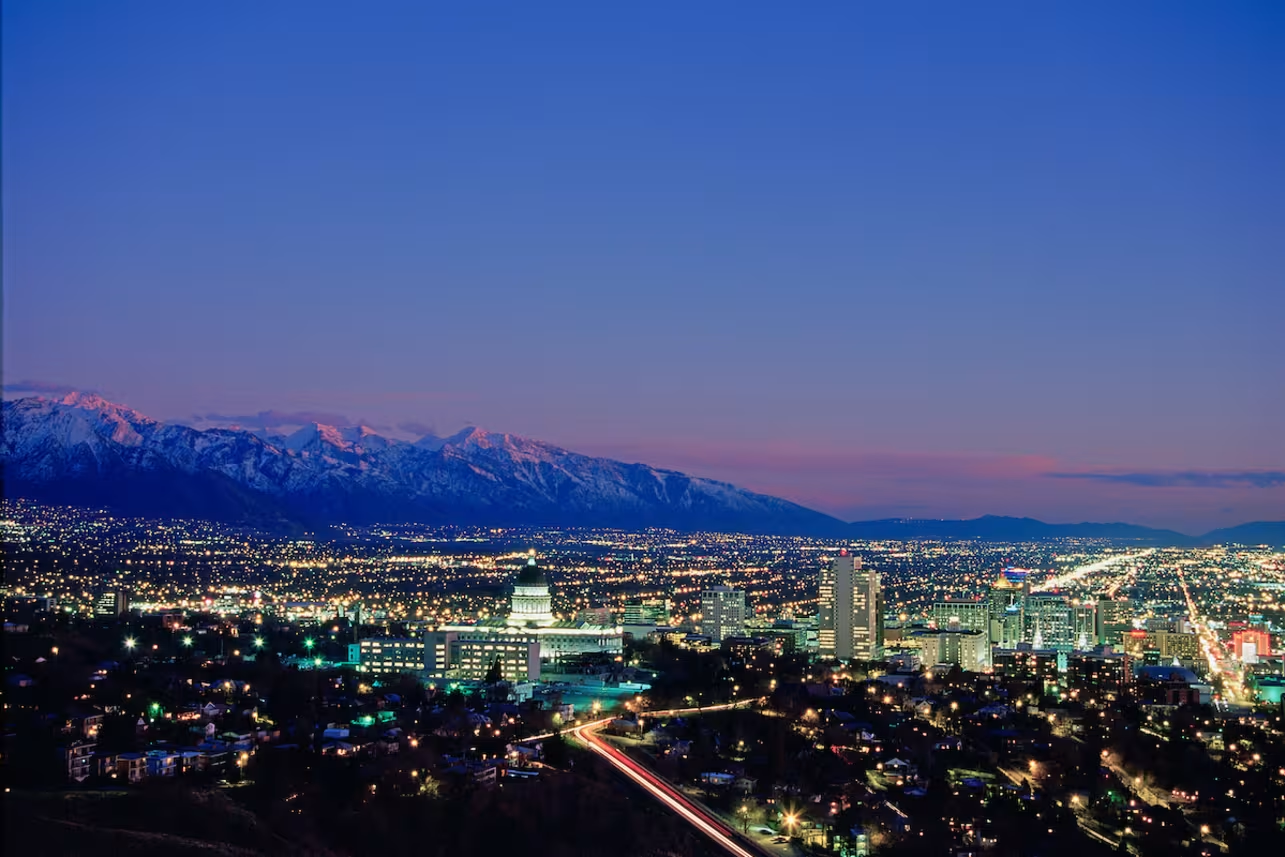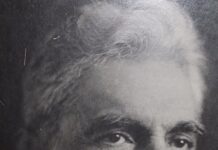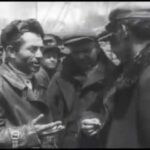by Lisa Boghosian
Salt Lake City, Utah – Armenians living in Utah? That’s what we said after AGBU received a donation in the mail from Abraham Markosian of Salt Lake City this fall. After our learning that a small, but very old Armenian community exists there, Mr. Markosian explained that his family, along with thousands of early settlers, came to the area at the turn-of-the-century to pursue work in mining and smelting. Other Armenian immigrants, like the Sheranians, Kezerians, and Aposhians relocated to Utah in the early 1900s as converts of the Church of Jesus Christ of Latter-Day Saints (LDS).
Today Armenians from all parts of the Diaspora are making their way to the Beehive State- from Iran, Armenia and Lebanon. Families like the Daghlians settled in the area 12 years ago from Beirut. There is even a little bit of Utah living in Armenia. After the 1988 earthquake, the Huntsman Corporation of Salt Lake constructed a concrete plant in Yerevan- SpanCrete- which was established to help the Armenian people rebuild the country.
There are few of us who have actually thought what it would be like to live as an Armenian in Utah- geographically tucked away between the Wasatch range of the Rocky Mountains, the Colorado Plateau, and the Great Basin. It might seem that the Armenian community there would be closer and tighter than in other parts of the country. First, because of its size- which ranges between 200 and 250 families- and second, because of its location. However, in reality the small community is actually more divided- origins, intermarriages, religious differences, generation differences, and lack of Armenian churches or schools have separated the community into many tiny factions.
The Armenian Pioneers
A few of the Armenians living in Utah today can trace their family’s history back to the period following American industrialization. In the late 1800s, hundreds of gold, copper, silver and lead mines were opened in the canyons of Salt Lake, including the copper pit at Bingham Canyon. According to historian Helen Papanikolas, in her article in Byzantine and Modern Greek Studies Journal, Volume V, 1979, in the beginning labor agents for the mines were commissioned by the mine owners to find the cheapest labor they could.
The agents often traveled to other parts of the world, or across the country to meet new immigrants, like the Armenians, at Ellis Island. There, the immigrants paid the labor agents between $20 and $50 dollars to secure their jobs, and the brokers paid the immigrants way to Salt Lake City. But upon arrival to Utah, the immigrants still had to bargain to maintain their positions at the mines. So, every month they’d pay the agents $1 to secure their job. And the labor agents paid the mine owners bribes to keep their positions with the companies.
Mr. Skleris, the leading mine broker for the West and Midwest, arranged with mine and railroad companies to deduct the money from the laborers wages before they were paid. Later, as mining positions grew in demand, labor agents hired underlings to arrange for new labor positions. Immigrants traveled to nearby coffee houses to pay the underlings to give them the details of their assignments, and also take them to their jobs where they acted as interpreters.
“The need for these workers in Utah was especially critical because Mormon church leaders counseled their people to stay on the land,” explains Mrs. Papanikolas. “The immigrants needed the wages to help their destitute families and Utah needed their muscle.” Between 1910 and 1920, nearly 150 Armenian surnames were registered as workers in the mines and for the railroads in Utah.
Greeks, Italians, and Lebanese came by the hundreds to the area, finding their own community to settle in. And for most of these early Armenian pioneers that place was Murray- located just south of Salt Lake. But for the Armenians living in this area, proximity to their own countrymen was not the same as it was for the Greeks and the Lebanese who clustered in pockets of Salt Lake- because the Armenians were few and spread out. Besides, the early miners didn’t have time to go out of their way to socialize – they were too busy working long hours for around $1.50 per day.
Today, Bingham County Copper Mine is the largest man made open-pit mine in the world. The pit measures 2.5 miles in diameter and one half mile deep. Much of the population is still directly or indirectly involved in the industry. Each year, Utah extracts significant quantities of copper, petroleum, coal, asphalt, and salt.
The Armenian Mormons
In 1990, it was reported that Mormons made up two thirds of the population in Utah. Though today that number is diminishing, their presence is as strong as ever. Salt Lake City is the heart of the Mormons, with its world-wide LDS Mormon Temple and the famous Tabernacle. Statues, plaques and memorials line the streets to pay homage to early Mormon settlers. Even the layout of the city is Mormon, originally the concept of leader Joseph Smith. Streets are noticeably straight and very wide. They are set on the compass, numbered from the center and arranged in ten-acre square blocks.
While statistics about the exact number of Armenian Mormons in Utah are not available, it seems about half of Utah’s Armenian population are Mormon converts. There are the second and third generation Armenians whose parents were converted to the LDS Church in Turkey. Legend has it that these families became Mormon after a missionary by the name of Ferdinand F. Hintze left Salt Lake and traveled east to Turkey to the small village of Zara, near Sivas. There, he and newly converted Nishan K. Sherinian convinced about 10 families to change their faith and to move to Salt Lake.
Generation after generation of these Hintze converts still live in the area today. And in the meantime, more proselytized Armenians make their way to Salt Lake every year. This new generation of Armenian converts includes the youth, many of whom have come from Armenia to study at Brigham Young University or the University of Utah. Lastly, there are the Armenians who have become Mormon through marriage.
If you ask any Armenian Mormon, they will tell you they are Armenian first. But their beliefs and convictions in their faith run powerfully close. Men spend hours, in addition to their regular work, volunteering at the Wards or in the Temples. Women’s schedules are booked with work from the Church, and evenings are devoted to family and study. While many of the Mormon virtues overlap with traditional Armenian values, being Mormon means living life a definite Mormon way.
One woman I spoke with in Utah said it was difficult growing up with Mormons because you always had the sense that you were different. Another remembers the time her daughter went to school with a cross around her neck, and Mormons made fun of her because she was wearing one- Latter Day Saints do not revere or wear crosses. One man insisted that the influence of the Mormons never affected him at all.
Maintaining Faith Without a Church
Many Armenians living in Utah today have maintained their allegiance to the Armenian Apostolic Church, despite never having had a church of their own in the area. Instead, they worship at home, or at different local churches. Many Armenians attend services at the Greek Orthodox Church in downtown Salt Lake, even though the liturgy is in another language.
Through the years, several attempts have been made by individuals in the area to establish an Armenian Church in Salt Lake. Unfortunately, none of them have succeeded. The same is true for Armenian schools. Buildings have been rented to house classes, but programs couldn’t continue because of lack of support.
New Genealogical Records for the Armenians
The LDS Genealogical Family History Library is the largest genealogical library in the world. It’s also the place where thousands of people from all over the world travel each year to trace their family history.
There are two libraries on the grounds of the LDS Temple. First, there is the Family Search Library. Inside the room, computers are available so individuals can quickly see if any research has already been done on their family. Searches can be done by last name, location, or by legal document. Anyone who was born or died in the United States should be registered in these computers. However, pedigree charts will only be displayed on screen if someone has already done the research on your family, and submitted it to the library.
There is also the main LDS Family History Library. The library is divided into different sections and contains detailed microfiche records of old documents. People spend hours here, researching files trying to find the names of their ancestors.
Today, there is much work being done for the Armenians in locating ancestral records. New records have been unmasked from all parts of the world- from Egypt, England, Austria, Turkey and many other countries- and now are available at the library.
Armenians in a Booming Economy
Besides mining, which is Utah’s largest industry, many people in the State are involved in agriculture. Driving down the I-15, past the airport to Great Salt Lake, are miles and miles of crops of hay, wheat, barley, and sugar beets. A large bulk of the agricultural income is also derived from cattle and dairy products.
While Armenians play a role in the economy of Utah, it does not appear that they lean towards any one industry. But all are aware of the changes taking place within their State. In the last ten years, the population of Utah has increased by nearly 18 percent. Many high-tech companies are making their way east from California and are settling with others in-between Salt Lake City and Provo. A Chamber of Commerce representative said that they receive between 400 to 500 phone calls a month from companies interested in re-locating to Utah. Most, the woman said, are calling from cities in California and from Philadelphia.
Many people are moving into the area everyday, and real estate is strong. New housing developments near the ski resorts have been built only half an hour away from downtown Salt Lake, making it easy for those who work in the area to commute.
Observations
In general, the people of Utah are very friendly. The greeters on the Temple Square grounds are among the friendliest- so many say hello, so many ask if they can help. And you can’t help but notice the smiles around the square. Young girls walk arm in arm, smiling when they are not even talking.
Waiting at the traffic lights is a standard for most “Utahians.” Even when there are no cars in sight, people wait to cross the street until the light turns green. So obedient and such a contrast to other major cities in the United States.
A dark head of hair is sure to stand out in Utah. In 1990, it was reported that 94 percent of the State was white. Of that population, probably 75 percent have blonde hair.
I asked the Armenians living in the area how they felt about Utah. Many like it there because of the recreation, clean air and clean living. Others are happy they’ve stayed or glad they’ve moved, especially with Salt Lake’s booming economy. Many never have known any different, but say their parent’s liked it because it reminded them of the land they left behind.
The Armenians of Utah are wonderful people. They are proud of their State, and rightly so. They are proud of their history, and proud of their heritage. It is through testimonies like these that we as Armenians begin to understand the different facets of our culture.
Originally published in the March 1996 issue of AGBU Magazine.
About the AGBU Magazine
AGBU Magazine is one of the most widely circulated English language Armenian magazines in the world, available in print and digital format. Each issue delivers insights and perspective on subjects and themes relating to the Armenian world, accompanied by original photography, exclusive high-profile interviews, fun facts and more.














